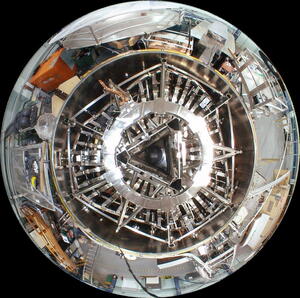Fusion down under
The present Australian research and development activities in fusion are currently concentrated on plasma theory and modelling. Experimental plasma physics research is conducted on H-1 at the Australian National University in Canberra, and inertial electrostatic confinement and dust in fusion plasmas at the University of Sydney. There are also active collaborations with a significant number of international laboratories.
While there has also been recent growth in international program participation, Australia is not yet formally part of the ITER Project. In 2004, a group of Australian fusion scientists and engineers in various organizations and universities formed the Australian ITER Forum, with the goal of achieving Australian participation in the ITER program.
Subsequently, the ITER Forum, with Government support, met with representatives of the ITER Members at a workshop called "Towards an Australian involvement in ITER" in Sydney, in October 2006. Post-workshop, the Forum conducted a strategic planning exercise to outline a participation route to ITER and develop a sustainable domestic capability for fusion demonstration reactor (DEMO) timescales. The strategic plan, which was released in August 2007 and now has widespread institutional support, proposed an Australian contribution of an ITER subsystem, strategic fellowships, and enabling research infrastructure upgrades. Australia has not only scientific and technological expertise to offer the ITER Project, with the ability to train more, but also the backing of specialist industrial firms, and raw materials of fusion relevance, namely for lithium, vanadium and for niobium superconductors.
Most recently (February 2009), two representatives of the ITER Organization visited Canberra for discussions concerning some plasma diagnostics for ITER which have been identified as necessary, but are, as yet, uncredited.



